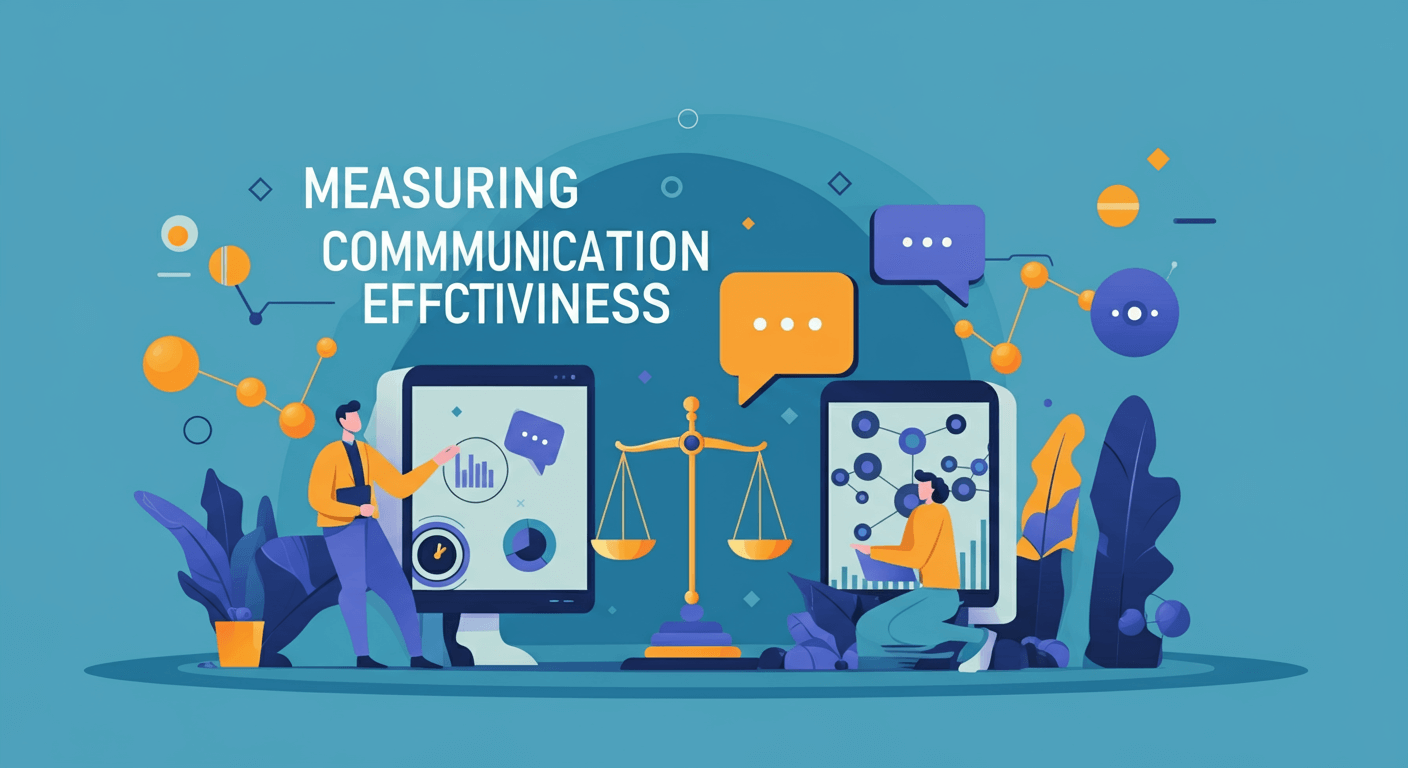
Effective marketing communication separates thriving B2B companies from those struggling to generate qualified leads. While product quality and pricing matter, your ability to communicate value clearly and persuasively determines whether prospects choose your solution over competitors.
The Foundation of B2B Marketing Communication

B2B marketing communication differs fundamentally from consumer marketing because you’re addressing professional decision-makers who evaluate purchases based on business impact rather than emotional appeal. These buyers seek solutions that solve specific problems, deliver measurable results, and justify their investment to stakeholders.
Business buyers conduct thorough research before engaging with sales teams. They compare multiple vendors, scrutinize case studies, and seek peer recommendations. Your marketing communication must provide the information they need to build confidence in your solution throughout this evaluation process.
Decision-making committees typically involve multiple stakeholders with different priorities and concerns. Technical buyers focus on functionality and integration capabilities, while economic buyers evaluate ROI and budget impact. Your communication strategy must address each stakeholder’s specific needs.
Longer sales cycles in B2B markets mean your communication must nurture relationships over months rather than driving immediate conversions. This requires consistent messaging across multiple touchpoints and communication channels.
The most successful B2B companies understand that marketing communication serves as the bridge between initial awareness and sales conversations. Your messaging quality directly impacts lead quality, sales velocity, and ultimately revenue growth.
Understanding Your B2B Audience
Effective B2B marketing communication starts with deep understanding of your target audience’s business challenges, goals, and decision-making processes. This goes beyond demographic data to include psychographic insights about their priorities, fears, and success metrics.
Industry expertise requirements vary significantly across sectors. Healthcare buyers need different proof points than manufacturing prospects, and technology companies evaluate vendors differently than professional services firms. Your communication must demonstrate relevant industry knowledge and speak their language.
Company size affects buying processes, budget considerations, and implementation requirements. Enterprise buyers often require extensive vendor evaluations and compliance documentation, while small business owners might prioritize simplicity and quick deployment.
Job function influences how prospects evaluate solutions and what information they find most relevant. IT professionals care about technical specifications and integration capabilities, while marketing managers focus on campaign results and user experience.
Buyer Persona Development
Primary research through customer interviews, surveys, and sales team feedback provides authentic insights into buyer motivations and challenges. These conversations reveal the language prospects use to describe their problems and desired outcomes.
Competitive analysis shows how prospects currently solve their problems and what alternatives they consider. Understanding the competitive landscape helps you position your solution effectively and address common objections.
Stakeholder mapping identifies all the people involved in buying decisions and their relative influence. This helps you create targeted messaging for each stakeholder while maintaining consistent overall positioning.
Crafting Compelling Value Propositions
Your value proposition serves as the foundation for all marketing communication by clearly articulating why prospects should choose your solution over alternatives. Strong value propositions focus on specific business outcomes rather than product features.
Problem-solution fit must be immediately apparent to prospects. Start by identifying the specific pain points your solution addresses, then explain how you solve these problems better than current alternatives.
Quantifiable benefits provide concrete reasons for prospects to engage with your company. Instead of claiming to “improve efficiency,” specify that you “reduce processing time by 40%” or “eliminate 15 hours of manual work per week.”
Differentiation factors highlight what makes your approach unique and valuable. This might include proprietary technology, specialized expertise, or innovative methodologies that competitors cannot replicate.
Value Proposition Testing
A/B testing different value propositions in email campaigns, landing pages, and advertisements reveals which messages resonate most strongly with your audience. Test one element at a time to identify the most effective components.
Sales feedback from your team provides insights into which value propositions help close deals and which create confusion or objections. Regular feedback sessions help refine your messaging based on real-world results.
Customer validation through testimonials and case studies demonstrates that your value proposition delivers real results. Prospects trust peer recommendations more than vendor claims.
Multi-Channel Communication Strategy
B2B buyers interact with your brand across multiple channels and touchpoints throughout their evaluation process. Your communication strategy must provide consistent messaging while optimizing content for each channel’s unique characteristics.
Email marketing remains one of the most effective B2B communication channels for nurturing leads and maintaining relationships. Personalized email sequences can educate prospects about your solution while building trust through valuable content.
Content marketing through blogs, whitepapers, and webinars positions your company as a thought leader while addressing specific questions prospects have during their buying journey. Educational content builds credibility and demonstrates expertise.
Social media platforms like LinkedIn provide opportunities to engage with prospects in professional contexts. Share industry insights, participate in relevant discussions, and build relationships with potential buyers.
Direct sales outreach becomes more effective when supported by strong marketing communication. Sales teams can reference marketing content and build on established messaging to move conversations forward.
Channel Integration Strategies
Consistent messaging across all channels reinforces your value proposition and builds brand recognition. While content formats may vary, core messages about your solution’s benefits should remain consistent.
Cross-channel promotion helps amplify your content’s reach and impact. Promote webinars through email campaigns, share blog posts on social media, and reference whitepapers in sales conversations.
Attribution tracking reveals which communication channels contribute most effectively to lead generation and sales. This data helps optimize resource allocation and improve campaign performance.
Content That Converts
B2B buyers consume significant amounts of content during their evaluation process, making content quality a critical factor in communication success. Your content must educate prospects while building confidence in your solution.
Educational content that addresses common challenges and industry trends positions your company as a trusted advisor rather than just another vendor. This approach builds relationships and establishes credibility with potential buyers.
Case studies provide social proof by demonstrating how similar companies achieved success with your solution. Include specific results, implementation details, and lessons learned to make these stories more compelling.
Thought leadership content showcases your expertise and industry knowledge. Share insights about market trends, best practices, and emerging opportunities to establish your company as an industry authority.
Content Format Optimization
Long-form content like whitepapers and detailed guides works well for complex topics that require thorough explanation. These formats demonstrate expertise and provide value to prospects researching solutions.
Video content can explain complex concepts more effectively than text alone. Product demonstrations, customer testimonials, and expert interviews help prospects understand your solution’s capabilities.
Interactive content such as calculators, assessments, and configurators engages prospects while providing personalized value. These tools can also capture valuable lead information and qualification data.
Personalization at Scale
Modern B2B marketing communication requires personalization to cut through information overload and capture prospect attention. However, true personalization goes beyond inserting names into email templates.
Behavioral personalization adapts content and messaging based on prospect actions and engagement patterns. Someone who downloads a technical whitepaper might be more receptive to detailed product information than someone who attends a high-level webinar.
Company-specific customization tailors messaging to reflect the prospect’s industry, company size, and specific challenges. This approach demonstrates understanding of their unique situation and requirements.
Role-based messaging addresses different stakeholders with content relevant to their specific concerns and responsibilities. Technical decision-makers need different information than business executives.
Personalization Technology
Marketing automation platforms enable sophisticated personalization workflows that adapt messaging based on prospect behavior and characteristics. These systems can deliver the right content to the right person at the right time.
CRM integration provides sales teams with context about prospect interactions and interests. This information helps sales representatives have more relevant and productive conversations.
Dynamic content systems automatically customize website experiences, email campaigns, and other communications based on visitor characteristics and behavior patterns.
Measuring Communication Effectiveness

Successful B2B marketing communication requires continuous measurement and optimization. The metrics you track should align with business objectives and provide actionable insights for improvement.
Lead quality metrics measure how well your communication attracts prospects who are likely to become customers. This includes lead scoring, conversion rates, and sales qualification rates.
Engagement metrics track how prospects interact with your content and communication. Time spent reading, content downloads, and email open rates provide insights into message effectiveness.
Sales impact metrics connect marketing communication to revenue results. This includes influenced pipeline, sales cycle length, and customer acquisition cost.
Attribution and Analytics
Multi-touch attribution models help you understand which communication touchpoints contribute most effectively to conversions. This information guides budget allocation and campaign optimization.
Content performance analysis reveals which types of content and messages resonate most strongly with your audience. Use this data to create more effective content and refine your messaging strategy.
Channel effectiveness measurement shows which communication channels generate the highest quality leads and best ROI. Focus resources on the channels that deliver the strongest business results.
Overcoming Common Communication Challenges
B2B marketing communication faces unique challenges that can undermine effectiveness if not addressed proactively. Understanding these challenges and their solutions helps you build more successful communication strategies.
Information overload affects both marketers and prospects. Your communication must cut through noise by providing clear, relevant value that addresses specific business needs.
Complex buying processes involving multiple stakeholders and lengthy evaluation periods require sustained communication efforts. Your messaging must remain consistent while adapting to different stakeholder needs.
Measuring ROI from communication activities can be challenging due to long sales cycles and multiple touchpoints. Implement robust tracking systems and attribution models to demonstrate communication impact.
Solution Strategies
Message simplification makes complex solutions more accessible to busy executives. Focus on business outcomes rather than technical details, and use clear language that non-experts can understand.
Stakeholder mapping helps you identify all decision-makers and influencers involved in the buying process. Create targeted messaging for each stakeholder while maintaining overall consistency.
Patient persistence is essential for B2B communication success. Maintain consistent outreach and value delivery throughout long sales cycles without being pushy or annoying.
Building Your Communication Excellence
Exceptional B2B marketing communication requires strategic thinking, consistent execution, and continuous improvement. The companies that excel in this area treat communication as a core competency rather than a support function.
Start by developing clear messaging that articulates your unique value proposition in terms that matter to your target audience. Test different approaches and refine your messaging based on prospect feedback and performance data.
Build systematic processes for creating and distributing content across multiple channels. Consistency in messaging and quality helps build trust and recognition with potential buyers.
Invest in technology and skills that enable personalization at scale. The ability to deliver relevant, timely communication gives you significant advantages over competitors using generic approaches.
Remember that effective B2B marketing communication is ultimately about building relationships and trust. Focus on providing value and demonstrating expertise rather than just promoting your products or services.
Your communication strategy should evolve as you learn more about your audience and refine your approach. The most successful B2B companies continuously test new approaches and adapt their communication based on results.
Leave a Reply